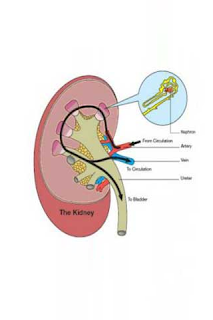What Are The Most Common 6 Myths About Spinal Stenosis?
Spinal stenosis is a consequence of the space between the
spine being crowed out from excessive tissue or bone growth. The consequence is
nerve swelling & damage guiding to excruciating symptoms such as stiffness,
tingling, pain and inflammation.
Spinal stenosis can happen at any point of your spine, but
is most common in the lower back & neck area. Nearly 75 percent of the
cases affect the lower back region. Have you or a loved one recently been
diagnosed? If so, read on to learn important myths and facts about treating
spinal stenosis.
Surgery
is the only form of cure:
Though
spinal stenosis surgery has proven to be a productive
method, but there’re also many non-invasive treatment procedures that your
doctor may recommend you to engage in before surgery. Some of the non-invasive Spinal
stenosis treatment
options include:
·
Chiropractic Treatment
·
Physical therapy
·
Epidural Injections
·
Prescription medication
·
Weight loss & proper diet
·
Spinal Decompression Therapy
Exercise is discouraged:
This is a partial truth. The
incorrect types of workout or too much activity can actually make your spinal stenosis symptoms to
deteriorate. Long periods of standing or physical exertion seem to prompt flare
ups for many people. In addition, short bursts of intense activity can lead to
pain and injury.
The best type of activity is
low-intensity, low-impact exercise such as swimming, elliptical training, yoga
and biking. It is also very important to stretch before and after exercise.
It affects only elder people:
Spinal stenosis does affect
older people, but those aged 30 to 50 or people who’ve injured their back are
also at risk. Spinal stenosis usually targets active, healthy inviduals who’re
otherwise in great health.
Only anti-inflammatory medications have been found to help
with spinal stenosis treatment:
Anti-inflammatory medications
play a large role in the supervision of spinal
stenosis symptoms, but that's not the only type of medication that's often
prescribed to patients. Some people with spinal stenosis have found relief
through anti-depressants, which have been found to reduce pain. Muscle relaxers
are also useful in spinal stenosis treatment plans.
Epidural steroid injections can
offer months of pain-free relief from spinal stenosis:
Epidural injections are useful
for people who’re suffering from severe, painful symptoms. However, the relief
from epidurals only lasts for 2 or 3 weeks, and the long-term efficiency of epidurals
beyond that is arguable.
For useful and accurate
information about spinal stenosis feel free to surf http://stenosisspinal.org/.

Comments
Post a Comment